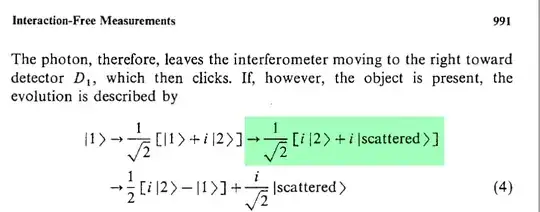In the original paper (Quanum Mechanical Interaction-Free Measurements - Elitzur, Vaidman, p.991), they make an algebraic substitution for the 'appearance' or 'scattering' of the bomb (green arrow):
Can anyone shed any light on what this substitution is? The "up" path (where the bomb lays) is $|2\rangle$. I do not see how (algebraically) the 'scattered' state is being introduced.
Thanks!
